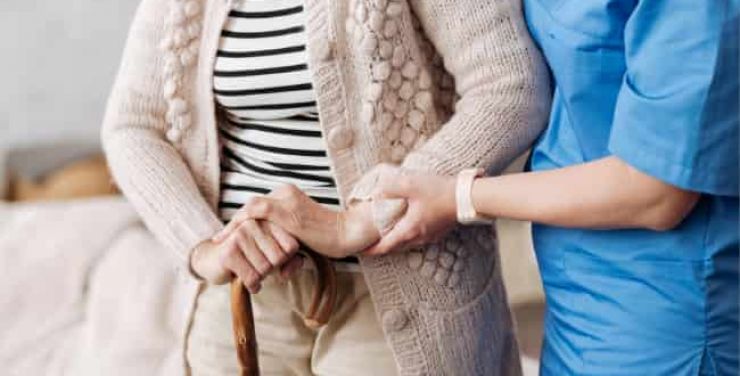Older people are safer in care homes than in their own property, ONS figures show

Office for National Statistics (ONS) figures show that since June, deaths in care homes have been less than the five-year average, whilst deaths at home have been persistently above the long-term average.
Fears from new government guidance on transferring patients
Despite this, reports last week indicated that, in response to the surge in virus cases, the government has updated its guidance, reiterating that care homes in England should be prepared to accept COVID-19 positive patients from hospitals.
Fears are being raised by memories of the 30,000 care home deaths caused by the NHS discharging over 20,000 elderly patients to care homes without first testing for Covid at the height of the pandemic. It was an ‘appalling error’ according to the Public Accounts Committee, a cross-party group which holds the government and its civil servants to account for the delivery of public services.
The new government guidance states that care homes will not be forced to admit COVID positive patients, although providers who have ‘block contracts’ with the NHS will come under more pressure than others.
Historically, care homes are always safer for frail elderly
Historically, care homes have always been safer for frail older people than their own homes – it is the reason such places exist. One effect of the pandemic was to show their value and the extraordinary skills of carers, acknowledged for the first time as ‘key workers’. I have been in the sector for over twenty years and have seen how carers working with residents is sometimes like a work of art.
It is not widely understood how carers come to love their residents and want the best for them; they have kept residents happy in the lockdown, helping to minimise feelings of isolation and loneliness. Residents have been able to talk to relatives using tablets and laptops, and at a distance through ‘window visits’. One woman who longed to visit her daughter in Australia was thrilled to be ‘flown over’ to her house via Google Earth. Residents have been treated to virtual trips to the local hostelry by temporarily converting part of the home and serving pub lunches, as well as ‘day trips’ to France. Local schools and churches have sent in gifts and cards (they were quarantined first).
Older people tend to live longer than expected in care homes. Some time ago the NHS slashed its budget for ‘continuing care’, an arrangement where, after treatment, some patients were transferred to care homes. Many had prognoses of only a few months, but with good care lived for two or three years. Seventy-six-year-old Tony had been given only three months to live when he came into our Evington home, but lasted for five years.
Although care homes are essentially family spaces, they have efficient infection control – they are used to keeping residents safe during Norovirus outbreaks in the winter, for example. In addition, the government has set up an Infection Control Fund (extended until March) and will offer the sector an extra £546 million to help providers through the winter months. Care homes are now fully equipped with PPE and take other measures, including deep cleaning and quarantine where necessary.
For Pilgrims’ Friend Society, prayer is central, with different groups praying at different times during the day. Some of our homes have stayed Covid-free, including one at the centre of a continuing local ‘spike’. Even though new residents are quarantined for two weeks they are well cared for so they don’t feel lonely.
Louise Morse
Louise is author of several books on old age, a cognitive behavioural therapist, a speaker and social commentator, and media and external relations manager with a Christian charity supporting the elderly, the Pilgrims’ Friend Society.
louise.morse@pilgrimsfriend.org.uk
Stay connected with our monthly update
Sign up to receive the latest news from Affinity and our members, delivered straight to your inbox once a month.



